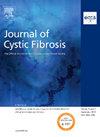利用机器学习 K-means 聚类分析对囊性纤维化患者在急性肺部恶化期间的症状表型进行分析。
IF 5.4
2区 医学
Q1 RESPIRATORY SYSTEM
引用次数: 0
摘要
导言:囊性纤维化患者(PwCF)经常出现与慢性肺病相关的症状。肺纤维化的并发症之一是肺功能加重(PEx),在此之前往往会出现症状加重和肺功能下降。症状群是指两个或两个以上的症状同时出现并相互关联;症状群为其他疾病提供了有意义的知识。本研究的目的是发现 PwCF 在 PEx 期间的症状集群模式,以阐明症状表型并评估 PEx 后的恢复差异:本研究是一项二次纵向分析(N = 72)。这项研究是一项二次纵向分析(N = 72),在美国招募了至少 10 岁、正在接受静脉注射抗生素治疗的 CF PEx 患者。在治疗的第 1-21 天使用 CF 呼吸道症状日记 (CFRSD) - 慢性呼吸道症状评分 (CRISS) 收集症状。对第 1 天的症状数据进行 K-means 聚类计算,以检测聚类模式。结果显示:症状明显聚类:结果:根据症状的严重程度对症状进行了明显的聚类:低症状(LS)表型(n = 42)、高症状(HS)表型(n = 30)。与 LS 型相比,HS 型的症状和 CRISS 评分更差(p< 0.01)。HS表型比LS表型每年多住院5晚(p< 0.01)。21天内,HS-表型比LS-表型的症状更严重(p< 0.0001):结论:CF-PEx 第一天的症状会明显增多。与 LS 型患者相比,HS 型患者在医院度过的夜晚更多,在 PEx 治疗结束时症状得到同样缓解的可能性也更小。本文章由计算机程序翻译,如有差异,请以英文原文为准。
Symptom phenotyping in people with cystic fibrosis during acute pulmonary exacerbations using machine-learning K-means clustering analysis
Introduction
People with cystic fibrosis (PwCF) experience frequent symptoms associated with chronic lung disease. A complication of CF is a pulmonary exacerbation (PEx), which is often preceded by an increase in symptoms and a decline in lung function. A symptom cluster is when two or more symptoms co-occur and are related; symptom clusters have contributed meaningful knowledge in other diseases. The purpose of this study is to discover symptom clustering patterns in PwCF during a PEx to illuminate symptom phenotypes and assess differences in recovery from PExs.
Methods
This study was a secondary, longitudinal analysis (N = 72). Participants at least 10 years of age and being treated with intravenous antibiotics for a CF PEx were enrolled in the United States. Symptoms were collected on treatment days 1–21 using the CF Respiratory Symptom Diary (CFRSD)-Chronic Respiratory Symptom Score (CRISS). K-means clustering was computed on day 1 symptom data to detect clustering patterns. Linear regression and multi-level growth models were performed.
Results
Symptoms significantly clustered based on severity: low symptom (LS)-phenotype (n = 42), high symptom (HS)-phenotype (n = 30). HS-phenotype had worse symptoms and CRISS scores (p < 0.01) than LS-phenotype. HS-phenotype was associated with spending 5 more nights in the hospital annually (p < 0.01) than LS-phenotype. HS-phenotype had worse symptoms over 21 days than LS-phenotype (p < 0.0001).
Conclusion
Symptoms significantly cluster on day 1 of a CF-PEx. PwCF with HS-phenotype spend more nights in the hospital and are less likely to experience the same resolution in symptoms by the end of PEx treatment than LS-phenotype.
求助全文
通过发布文献求助,成功后即可免费获取论文全文。
去求助
来源期刊

Journal of Cystic Fibrosis
医学-呼吸系统
CiteScore
10.10
自引率
13.50%
发文量
1361
审稿时长
50 days
期刊介绍:
The Journal of Cystic Fibrosis is the official journal of the European Cystic Fibrosis Society. The journal is devoted to promoting the research and treatment of cystic fibrosis. To this end the journal publishes original scientific articles, editorials, case reports, short communications and other information relevant to cystic fibrosis. The journal also publishes news and articles concerning the activities and policies of the ECFS as well as those of other societies related the ECFS.
 求助内容:
求助内容: 应助结果提醒方式:
应助结果提醒方式:


